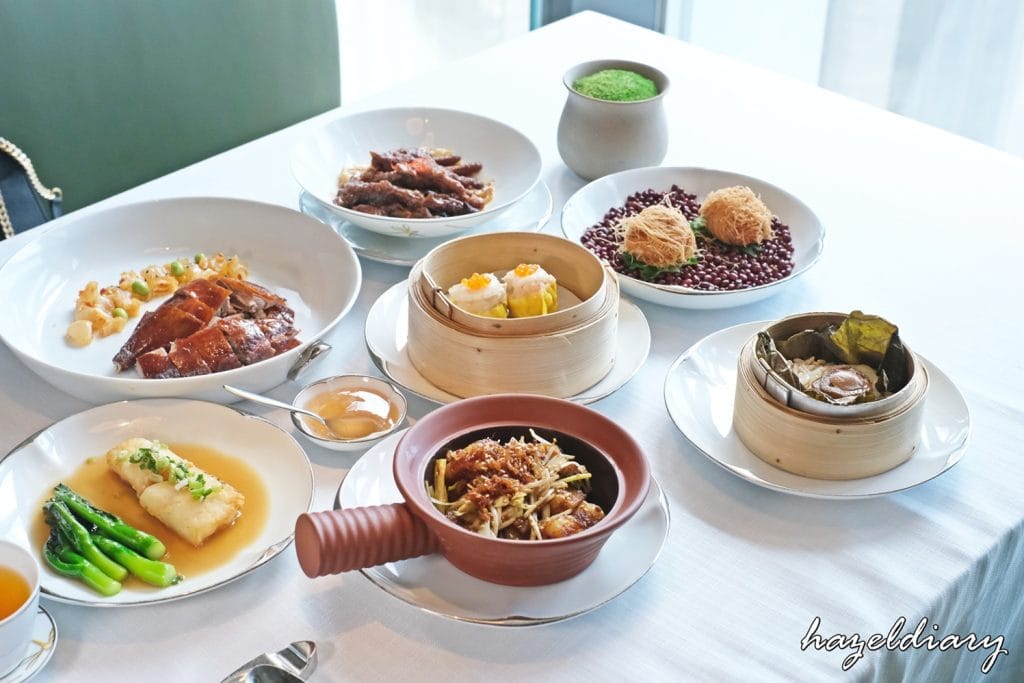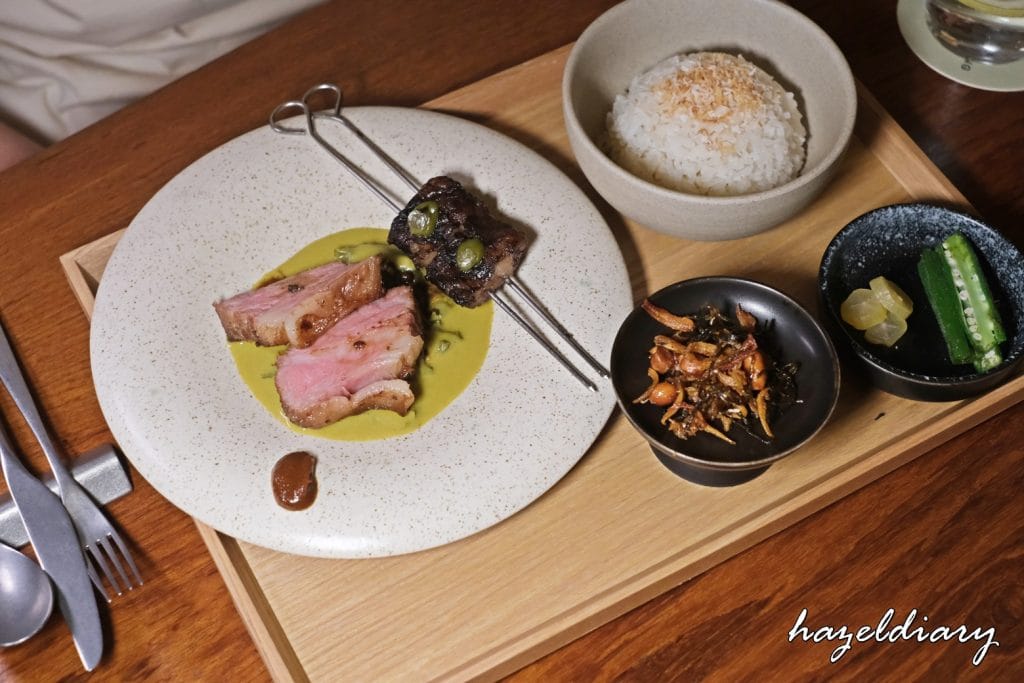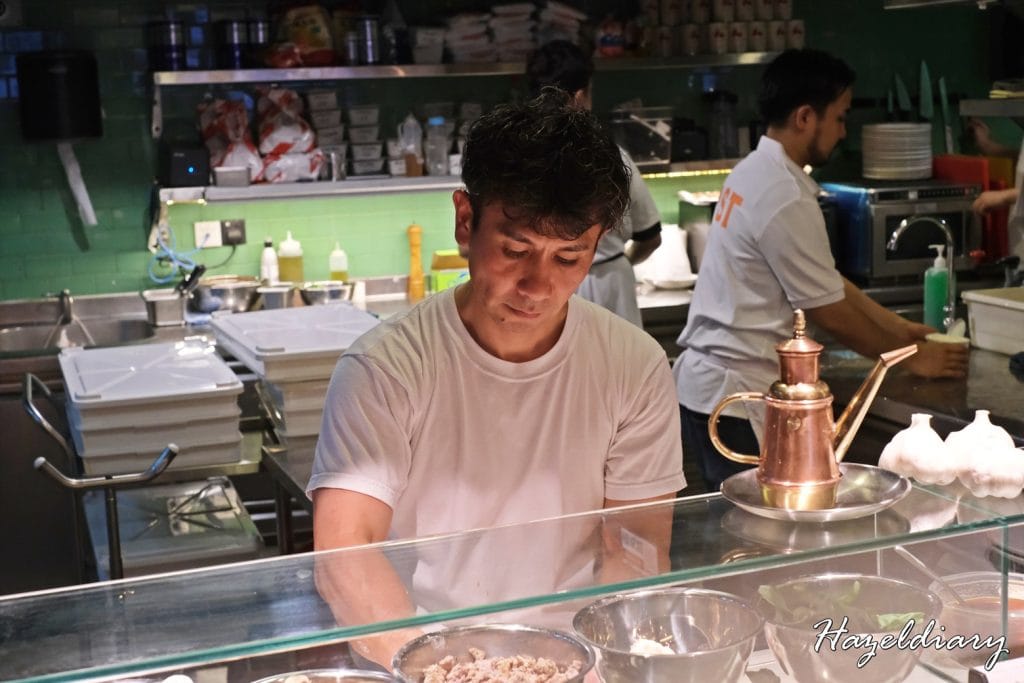To commemorate its 6th anniversary and celebrate Singapore’s 60th birthday, Kai Duck , a modern casual concept by award-winning Group Executive Chef Fung Chi Keung of Kai Garden is offering an enticing 60% off selected dishes on a specially curated menu. The promotion runs from now till 31 August 2025, valid Monday to Friday (excluding Public Holidays).
Read more: [SG EATS] Kai Duck Celebrates 6th Anniversary & SG60 with 60% Off Selected Dishes
Located at Ngee Ann City, Kai Duck is well-known for its innovative duck-focused creations that blend traditional Cantonese techniques with a contemporary flair. For this dual celebration, the restaurant has handpicked 6 specialty dishes and 6 handcrafted dim sum items that showcase both Chef Fung’s signature style and new culinary inspirations.
Here are the highlights dishes that you can check out:
Dim Sum Delights:
Dim sum lovers are in for a treat with these handcrafted small bites:

- Baked Pastry with Chinese Ham & Scallion (S$9.80, 3pcs) : Flaky and buttery pastry encasing premium Jin Hua ham for a savoury-sweet bite.

- Pan-Fried Pork Bun with Scallion (S$10.80, 3pcs) : Chef Fung’s unique rendition of a classic, packed with juicy pork and aromatic scallion.

- Steamed Cheong Fun with Radish and Crispy Rice (S$10.80++) : A delightful play on texture, combining silky cheong fun with crunchy bits.

- Sliced Peking Duck with Crackers (S$23.20++ for 4pcs) :A creative take on the classic; instead of the usual wrap, this version comes atop crispy crackers, offering a playful contrast in texture that’s both satisfying and unexpected.

- Yuxiang Eggplant Salted Dumplings (S$9.80++ for 3pcs) : I enjoyed the mochi-like skin and purplish hue. Visual was on point and it is a delicate yet bold flavour profile.

- Air Salad Duck Spring Roll (S$9.80, 3pcs): A Kai Duck signature, featuring tender Irish duck wrapped in an ultra-crisp shell. Light yet flavourful.

- Pizza Carrot Cake with Crispy Bacon (S$16.80++)
A fun, shareable creation that fuses Western presentation with local flavours.
Specialty Highlights:

- Peking Duck Salad Hand Roll (S$31.20, 4pcs): A modern twist on a classic, with crisp duck skin, fresh greens and housemade sauces.

- Roasted Duck (S$38 half / S$70 whole): A perennial crowd favourite, succulent and bursting with flavour from Chef Fung’s secret marinade.

- Crispy Onion Duck Tart (S$16, 4pcs): A playful new creation featuring diced duck and crispy rice pops in a savoury tart shell. Recommend to order this when you dine in here.

- Wok-Fried Hot Pot Panda Rice with Diced South African Abalone (S$48): An indulgent dish featuring premium “Panda Rice” from Szechuan and abalone, stir-fried and mixed tableside for a rich, umami-packed experience.
From now till 31 August 2025, enjoy the following deals when you dine in:
- Lunch (Mon–Fri): 60% off 1 Dim Sum + 1 Specialty Dish
- Dinner (Mon–Fri): 60% off 1 Specialty Dish
For a limited time, diners can also sign up for Kai Duck’s Annual Membership at just S$38, which entitles you to30% off the dim sum menu. Terms & conditions applied.
Address: Kai Duck
#05-10A, Ngee Ann City, 391 Orchard Road, Singapore 238872
Opening Hours:
Monday–Friday 11:30AM – 3:30PM | 5:30PM – 10:00PM
Saturday–Sunday & Public Holidays 11:00AM – 4:00PM | 5:30PM – 10:00PM
Reservations: +65 6509 8780
Website: https://kaiduck.com.sg/
Follow me on Facebook / Instagram / Tiktok / Youtube for insta updates
![[SG EATS] Kai Duck Celebrates 6th Anniversary & SG60 with 60% Off Selected Dishes [SG EATS] Kai Duck Celebrates 6th Anniversary & SG60 with 60% Off Selected Dishes](https://hazeldiary.com/wp-content/uploads/2025/06/Kai-Duck-60th-anniversary-SG60.jpg)

![[SG EATS] Weekend Yum Cha at 5 ON 25, Andaz Singapore – Refined Dim sum Dining with a View [SG EATS] Weekend Yum Cha at 5 ON 25, Andaz Singapore – Refined Dim sum Dining with a View](https://hazeldiary.com/wp-content/uploads/2025/06/5-on-25-Andaz-Weekend-Dim-Sum-Brunch.jpg)













![[SG EATS] Belimbing at Beach Road – New-Gen Singaporean Restaurant by The Coconut Club Team [SG EATS] Belimbing at Beach Road – New-Gen Singaporean Restaurant by The Coconut Club Team](https://hazeldiary.com/wp-content/uploads/2025/06/Belimbing-Grilled-Short-Rib.jpg)

















![[JAPAN TRAVELS] A Day Trip to Kobe – What to See, Eat and Do in a Day [JAPAN TRAVELS] A Day Trip to Kobe – What to See, Eat and Do in a Day](https://hazeldiary.com/wp-content/uploads/2025/05/Kobe-Japan-Day-trip.jpg)













![[SG EATS] Pizza Studio Tamaki (PST) – Famous Tokyo Neapolitan Pizza Now in Singapore at Tanjong Pagar [SG EATS] Pizza Studio Tamaki (PST) – Famous Tokyo Neapolitan Pizza Now in Singapore at Tanjong Pagar](https://hazeldiary.com/wp-content/uploads/2025/05/Pizza-Studio-Tamaki-PST-Singapore-Chef-Tamaki.jpg)













![[SG EATS] Zeniya Singapore– A New Chapter of Kaga Kaiseki at Shaw Centre [SG EATS] Zeniya Singapore– A New Chapter of Kaga Kaiseki at Shaw Centre](https://hazeldiary.com/wp-content/uploads/2025/05/Zeniya-Singapore-maintains-a-deep-respect-for-its-ingredients-paired-with-a-dedication-to-progressive-culinary-expression-in-the-menu.jpg)



























